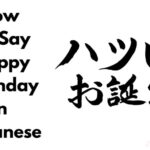Here’s everything you need to know about Hanakotoba in Japan. The significance and meaning of flowers in Japanese.
Unveiling a hidden language, delve into Hanakotoba, the Japanese art of flower meanings. Each bloom whispers emotions, from love and purity to nobility and regret.
Discover how flowers speak volumes in Japanese culture, adding depth to gifts, ikebana arrangements, and even fashion.
Hanakotoba: Meaning Of Flowers In Japanese
Hanakotoba, literally meaning “flower words” in Japanese, is their unique language of flowers. It assigns specific meanings and symbolism to different flowers, allowing for nonverbal communication.

Imagine giving a bouquet that expresses emotions beyond just beauty. The type of flower, its color, and even the arrangement all play a role in the message conveyed. This intricate system is used in various aspects of Japanese culture, from ikebana (flower arranging) to choosing kimono patterns.
While Hanakotoba originated in the 19th century, it has become deeply woven into Japanese tradition. So next time you see flowers in Japan, consider the hidden language they might be speaking.
What Does Hanakotoba Mean?
Hanakotoba is a word of Japanese origin that’s written in kanji characters as 花言葉. When translating these letters to the English language they literally mean “language of flowers” or “flower words”.
The word “Hanakotoba” is pronounced by making the “H” silent as in “Anakotoba”. The concept behind the flower language in Japanese is to convey or communicate positive emotions with one another without the use of any words or verbal communication.
We’ve seen how flowers are used throughout history and in different cultures. For instance, flowers are used to greet someone you love, they’re used for weddings to symbolize unity and affection, and are even used for decorations and for religious and spiritual purposes as well.
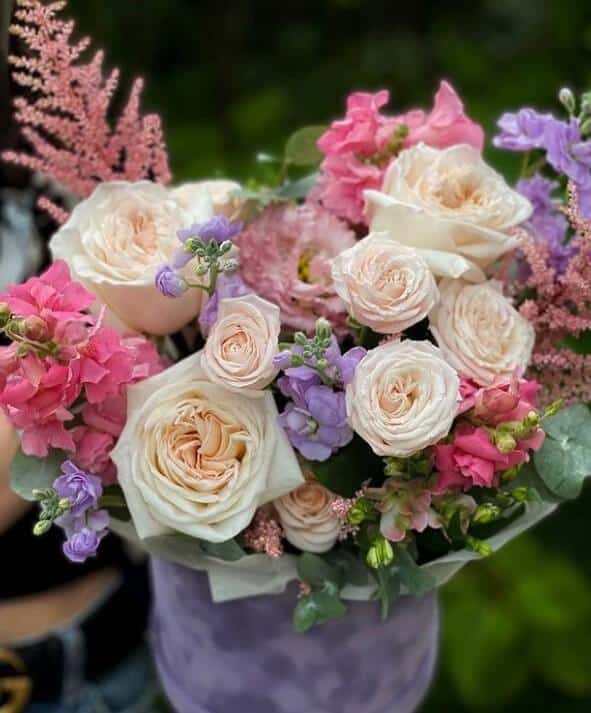
- Related: Meaning and Significance of Lotus Flower
- Related: Significance and Meaning of Itachi in Japan
Flowers are a great deal in Japan as well as they’re used on several occasions to symbolize distinct purposes.
The Hanakotoba tradition mentions how the most popular flowers in Japan possess different qualities and what they symbolize depending on the species of flowers and their colors as well.
The Japanese language of flowers aka Hanakotoba not only speaks of flowers that symbolize feelings of love and compassion but also of other intense and complex human emotions as well.
Each of the popular flowers in Japan represents distinct emotions and no one is the same as the other.
Therefore let’s find out the Hanakotoba behind some of the popular flowers in Japan below.
Hanakotoba Of The Popular Flowers In Japan
There are countless flowers in the Japanese tradition that are deemed crucial and we’re here to look at the Hanakotoba of some of the most popular flowers in Japan.
- Meaning and Significance of Cherry Blossom (桜の花) in Japan
Cherry Blossom which is known as “Sakura” in Japanese is one of the renowned symbols of Japan and its culture. Cherry blossoms bloom during the spring season and the Japanese people mark new beginnings during this period.
The cherry blossom flowers are pastel pink in color and they bloom in great quantities, falling over and covering the entire place with clouds of flowers.
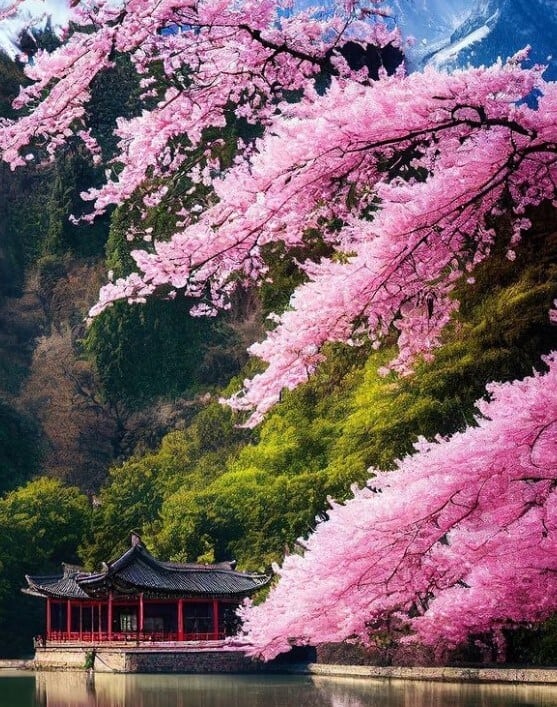
It’s also the unofficial national flower of Japan and comes in a few varieties. Each variety of the cherry blossom flower carries different meanings, however, generally, the Hanakotoba of cherry blossom is a beautiful woman.
If you want to compliment a woman’s looks you can give them cherry blossom flowers.
- Meaning and Significance of Plum (梅) in Japan
Plum flowers are similar to cherry blossoms and they’re the beloved flowers to the Japanese after the cherry blossom.
They’re called “Ume” in Japanese and they can mean multiple positive traits such as nobility, loyalty, and patience. However, since there are a couple of varieties of the ume the meanings of the flowers can vary.
For instance, the white plum flower represents purity while the red plum flower means grace.

- Meaning and Significance of Chrysanthemum (菊) in Japan
Chrysanthemum is called “Kiku” in Japanese and it’s one of the most popular flowers in Japan. It’s also used as a symbol on the Imperial seal and it’s a fluffy flower that comes in several vibrant colors with each of them having a different meaning.
- Red chrysanthemums represent love
- Pink chrysanthemums represent royalty
- Violet chrysanthemums are offered to the ill for quick recovery
- White chrysanthemums symbolize honesty
- Yellow chrysanthemums symbolize happiness
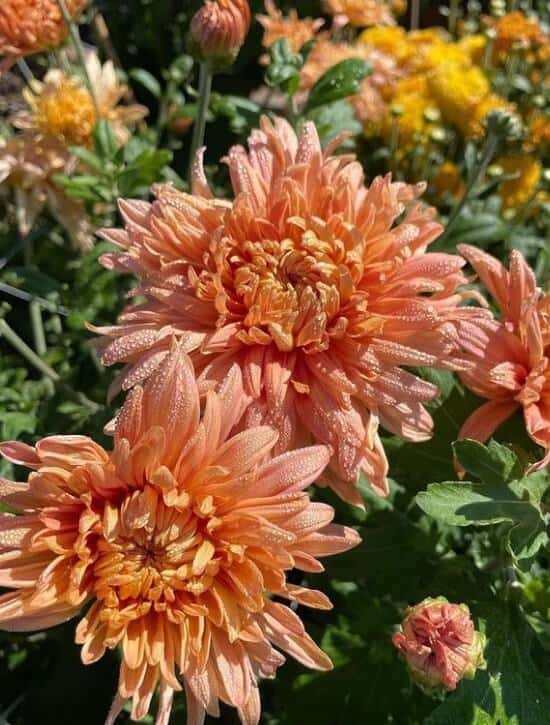
- Meaning and Significance of Wisteria (藤) in Japan
Wisteria is one of the sacred flowers in Japan and it’s called “Fuji” in Japanese. Most wisteria flowers in Japan are violet in color yet there are other varieties of wisteria which can come in yellow or white colors. Wisteria flowers can have multiple meanings in Japanese customs.
They can be used to symbolize beauty and unity, however, they can also mean incurable or clingy.
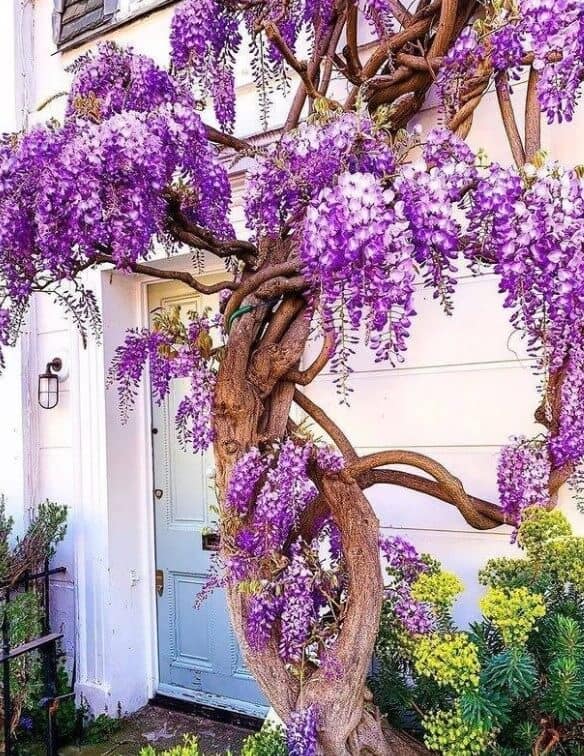
- Meaning and Significance of Camelia (椿) in Japan
Camelia is pronounced “Tsubaki” in Japanese and it has been a prominent flower in Japanese customs since the 8th century AD.
Camelia flowers are quite known for being used as ingredients in beauty products and cosmetics. These flowers come in a variety of colors such as pink, red, and, white.
- Pink camelia flowers represent beauty and love.
- Red camelia flowers signify humility.
- White camelia flowers represent elegance, charm, and simplicity.
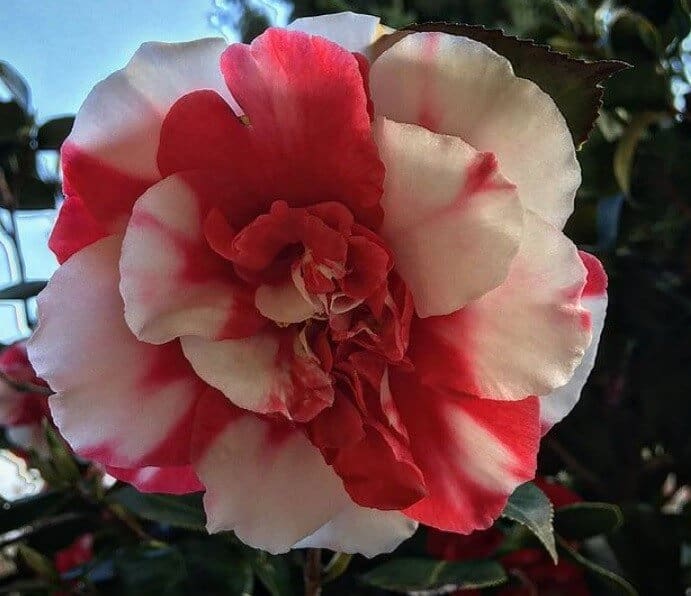
Let’s take a look at the Hanakotoba of other flowers prominent across Japan below.
| Flowers | English Pronunciation | Hanakotoba (Meaning of the flower) |
| Sunflower (向日葵) | Himawari | Respect, Excitement |
| Dahlia (天竺牡丹) | Tenjikubotan | A good taste |
| Jasmine (ジャスミン) | Jasumin | Grace |
| Morning Glory (朝顔) | Asagao | Promising |
| Lavender (ラベンダー) | Rabenda | Faithful |
| Hibiscus (ハイビースカス) | Habisakasu | Compassion |
| Daisy (雛菊) | Hinagiku | Trust |
| Lotus (蓮華) | Renge | Chastity |
| Red Rose (赤いバラ) | Akai Bara | Genuine love |
| Red Tulip (赤いチューリップ) | Akai Churippu | Fame |
| Yellow Tulip (黄色いチューリップ) | Kirroi Churippu | Unrequited love |
| Hydrangea (紫陽花) | Ajisai | Pride |
Origin Of Hanakotoba Tradition
We now know how the tradition of Hanakotoba has ingrained in Japanese traditions given how most popular flowers in Japan represent different emotions and elements.
But how did the Japanese come up with such a unique tradition of using flowers to express emotions and communicate?
It’s believed that the practice of Hanakotoba was introduced in Japan during the Meiji era which is in the 19th century.
Over time, Hanakotoba began flourishing all across Japan and every flower prevalent in Japan got its own meaning. However, as time passed by the meanings of flowers have altered to fit customs and religious practices in Japan.
Use Of Hanakotoba In Japanese Culture
We’ve witnessed the portrayal of Hanakotoba in several aspects of Japanese culture but we weren’t aware of what it meant back then.
Shocking to say that almost the most obvious Japanese practices involved the usage of Hanaktoba in them that most of us might have overlooked.
It’s time to see where the use of Hanakotoba is prevalent in Japanese culture.
- Kimonos For Women
The kimono is one of the traditional dresses of Japan for men, women, and even kids. Kimonos worn by women are the ones that are most likely to portray the beauty of Hanakotoba.
Japanese women wear specific kimonos that suit their age and those that comply with the seasons and occasions. Most kimonos worn by women are designed with colorful flowers that make them look feminine and also hint at what the women want to convey.
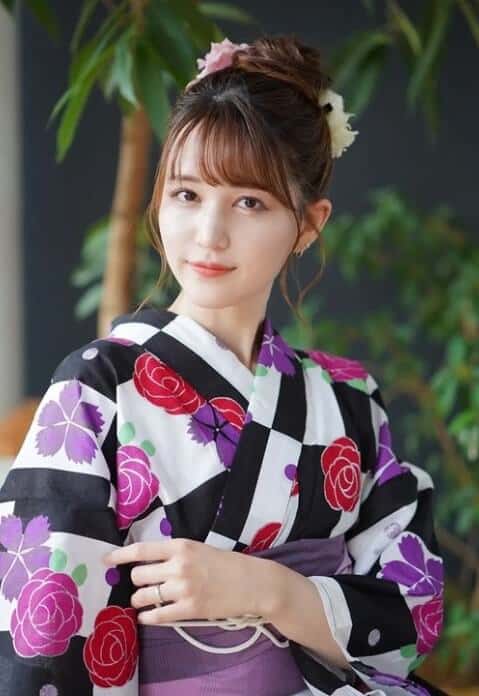
There are specific kimonos for girls, female teens, unmarried women, married women, and also for old women. Each of the kimonos based on the ages of women portray different flowers which also signifies their age and status as well.
- Anime and Manga Subcultures
We all are aware of how massive anime and manga are in Japan. Anime and manga never fail to showcase the significance of Japanese traditions and we’ve seen multiple anime that use Hanakotoba to portray the seasons in which the anime takes place, bringing about nostalgia, and also the emotions of the characters.
- Traditional Occasions and Ceremonies
Flowers are used globally for beautification on several occasions. However, in Japan, specific flowers are used for decoration on particular occasions. For instance, white chrysanthemums are generally used for funerals in Japan and red chrysanthemums are used for Japanese weddings. If either of them is used inappropriately then it can offend the parties concerned.
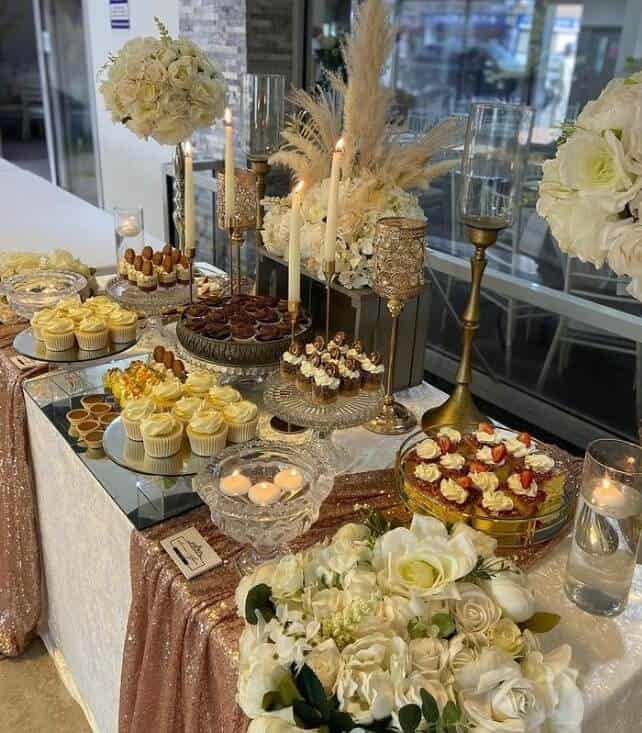
Is Hanakotoba Still Practiced In Japan?
The Japanese people are highly conservative and the fact that Japan has a large proportion of elderly people proves that the Japanese people are still ingrained in their cultural practices and beliefs.
This helps us understand that even the practice of Hanakotoba is still prevalent across parts of Japan especially when it comes to mainstream media and special occasions.
However, the meanings of the flowers in Hanakotoba have altered over the past decades, and new meanings or expressions have made their debut in recent times. Besides, flowers in Japanese tradition nowadays are predominantly used for beautification purposes irrespective of the Hanakotoba tradition and Japanese youngsters are quite unaware of the Hanakotoba practice as well.
What is Hanakotoba?
Hanakotoba is the Japanese word 花言葉 which means “flower words” or “language of the flowers” in the English Language. It basically defines using flowers as a means of communicating some of the most intense human emotions such as love, happiness, honesty, nobility, loyalty, etc rather than using words.
How do you pronounce Hanakotoba?
Hanakotoba is a Japanese word that’s written in kanji characters as 花言葉 and it means “the language of flowers” or “flower words” in English. Hanakotoba is pronounced by making the “H” silent like saying “Anankotoba”.
What do lilies symbolize in Japan?
Lilies in Japan symbolize the beauty of women and also intelligence as well. Lilies are also regarded to be a symbol of respect and nobility in Japanese traditions that are also used in religious offerings as well.
What does sunflower mean in Japan?
The sunflower is one of the common flowers in Japan that signify several aspects of human emotions and also other natural elements as well. In the Hanakotoba practice, sunflowers signify loyalty and affection. It’s also a symbol of wishing someone a long and fortunate life.
What do cherry blossoms symbolize in Japan?
Cherry blossoms also known as “Sakura” is one of the prominent symbols of Japan. The cherry blossom is the most beloved flower to the Japanese people that marks the beginning of the spring season. Cherry blossoms in the Hanakotoba practice are a way of expressing the charming appearance of a woman. They depict beauty, serenity, nobility, purity, and royalty as well.
Also Read




